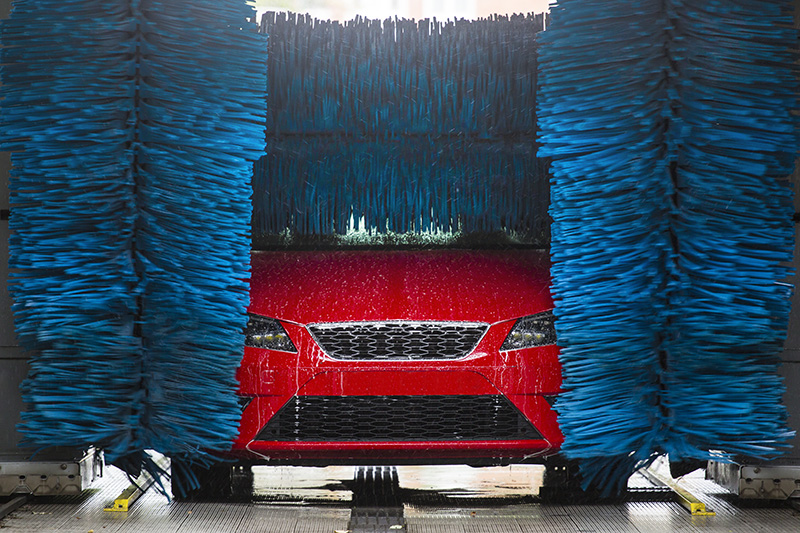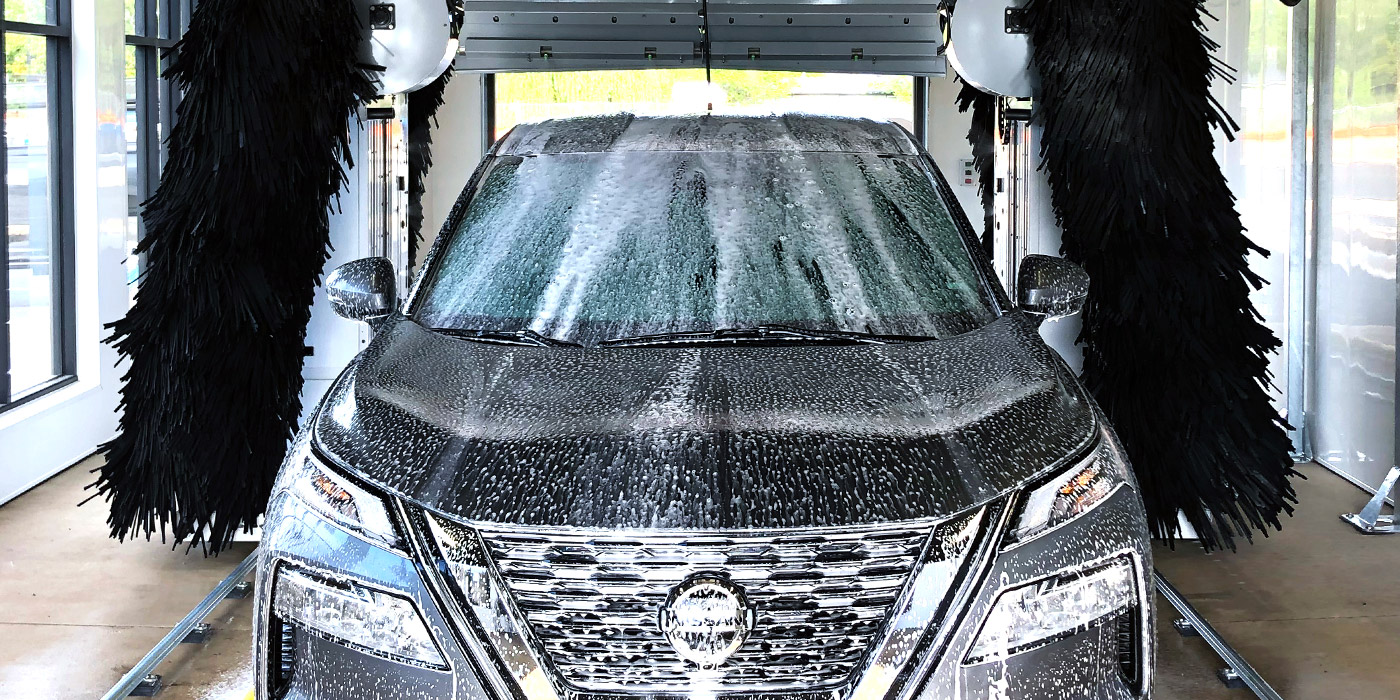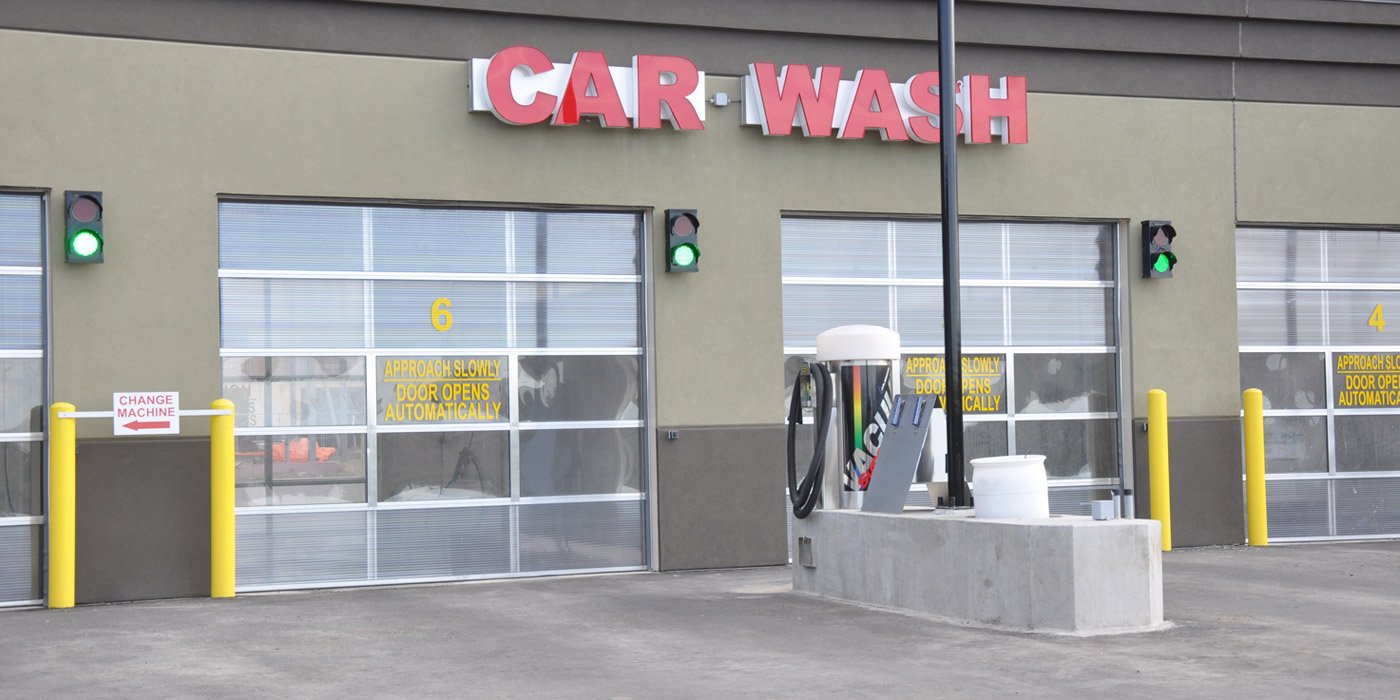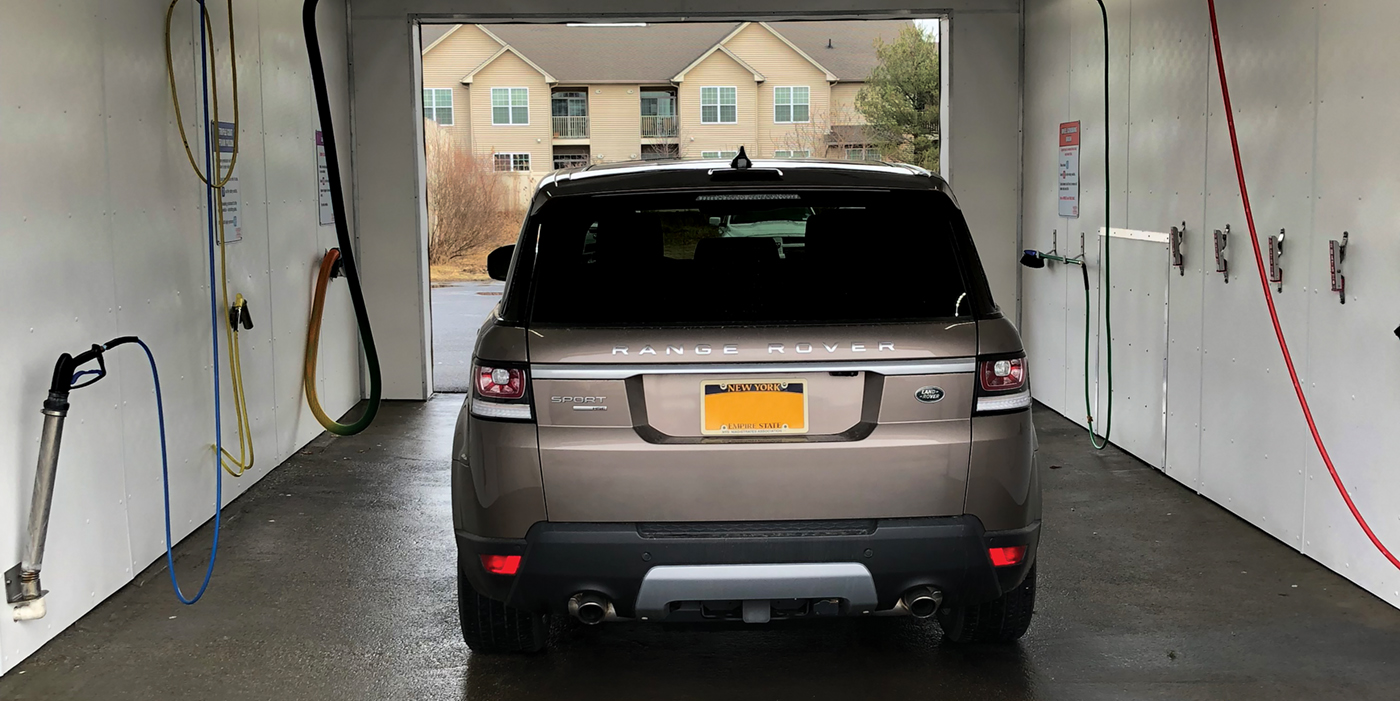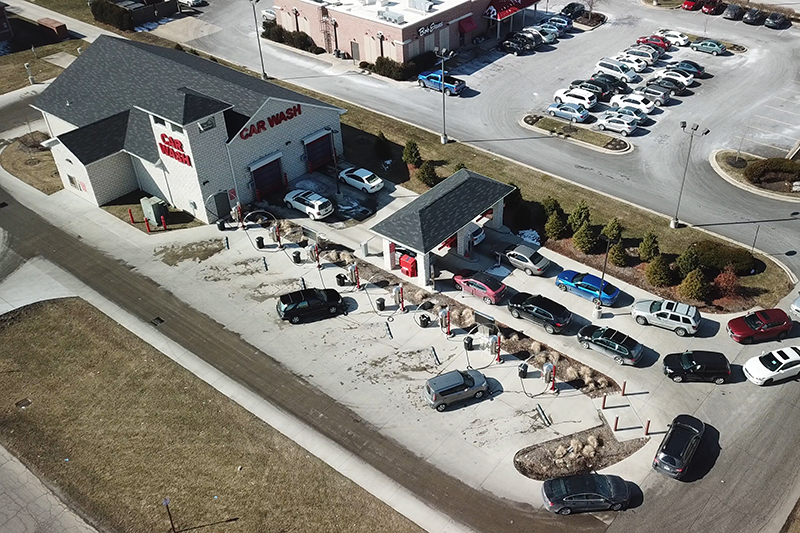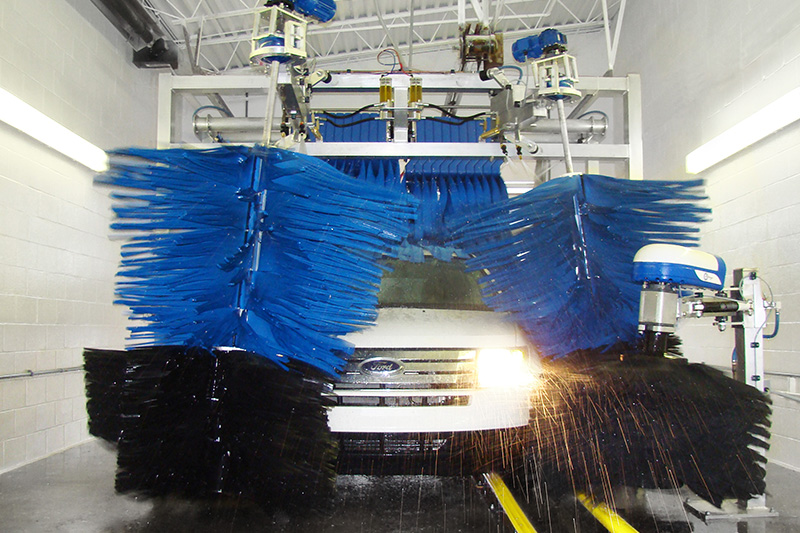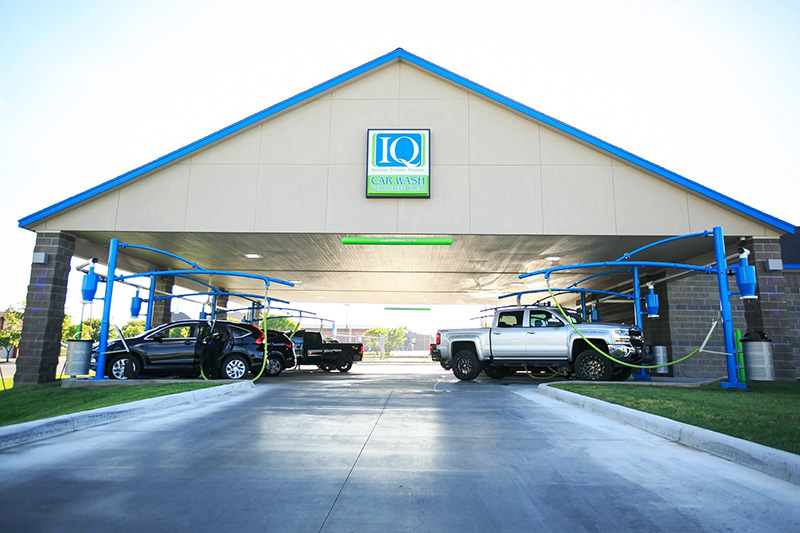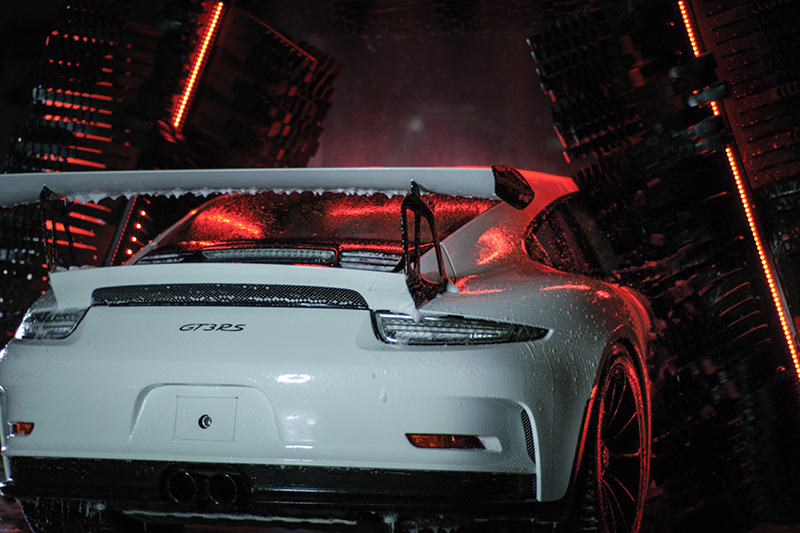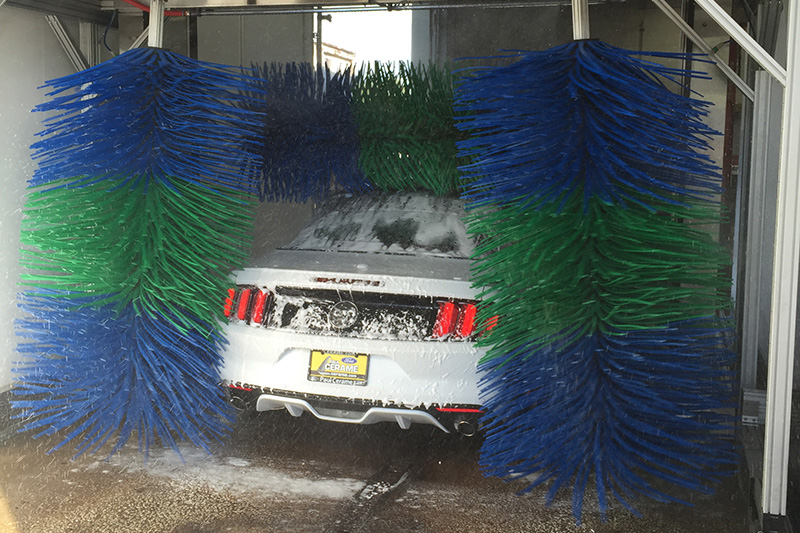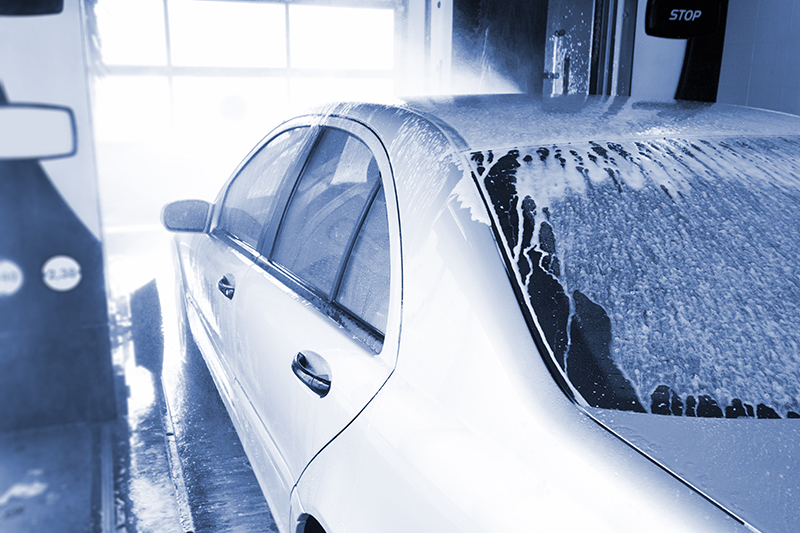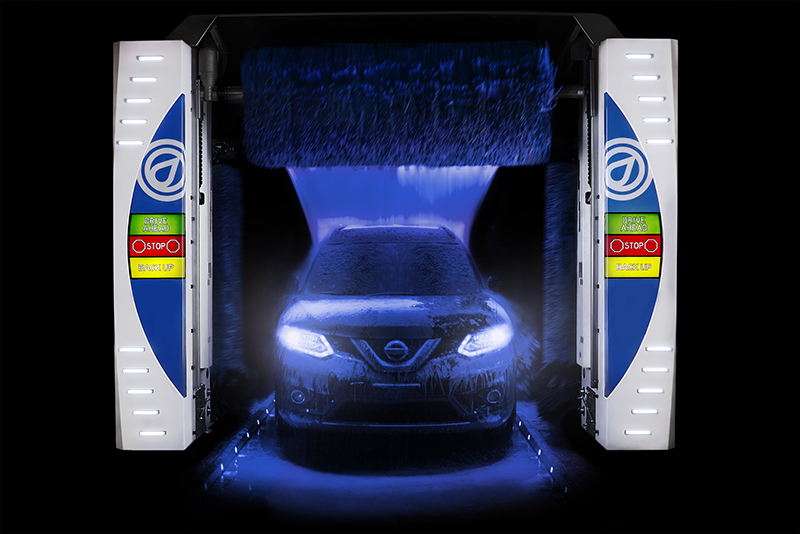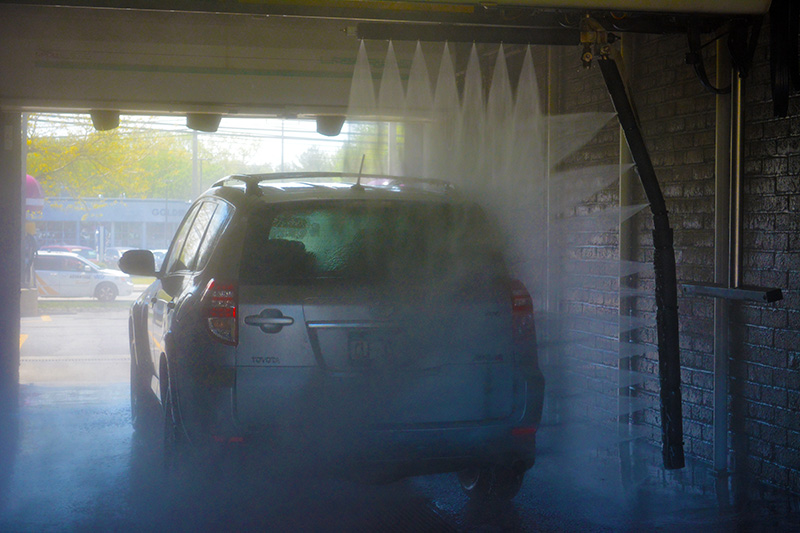In the in-bay automatic (IBA) market, replacing equipment is usually an “all or nothing” decision. It’s easy to find excuses to put off updating your equipment — bad economy, decreased revenue, increased utility and other business costs, just to name a few. Sometimes, though, replacing your IBA unit is one of the best things you can do for your carwash, and after it’s done, you might find yourself saying, “Gee, I wish I would have replaced my equipment years ago.”
Reasons to replace
According to Jim Koch, director of national accounts with Washworld Inc., there are several reasons one might need to replace an IBA unit, the most noted of which include high maintenance costs, increased downtime or just the age of the equipment. These factors are relatively easy to track year over year, but the other leading factor that is more difficult to quantify is competitive pressure.
“As equipment ages and new competition comes in, wash volumes tend to drop, but that drop can be very gradual over a period of years,” Koch explains. “That drop can come from other washes offering a better product and more features along with your current wash having a lot of downtime, which will drive customers to find new locations.”
As opposed to IBA operators on fuel retail sites, which have an instantaneous customer base, IBA operators in the private carwash sector will find it exceedingly difficult to pull customers back to the wash once they’ve lost them to a competitor. In order to retain these customers, however, you have to make them want to keep coming back. Customers can tell when you put investments back into your business (and when you don’t), and they appreciate that you care enough about their experience to keep yourself growing.
Koch finds that operators, especially in the petroleum market, often fall into the trap of only analyzing current wash volume to determine whether an investment in new equipment is justified. However, Koch finds this method unsound.
“Operators need to look at what their wash volumes were while the equipment was in its prime and make that determination if the investment in a new wash will be feasible to get those volumes back to where they used to be and grow on that number,” Koch states.
While you cannot guarantee that new equipment will boost your numbers, you can be assured that by doing nothing, your wash will continue its downward trend. Some operators, for instance, may simply have been waiting for better economic times. But, with the economy now booming, this excuse no longer holds much water.
Drew Dressler, eastern district sales manager for D&S Car Wash Equipment Co., notes, “We see many operators who have been waiting for a stronger economy finally replacing outdated in-bay automatics and investing in their sites to add curb appeal through new signage at the wash entrance, lighting in the bays and adding new methods of payment acceptance, such as RFID and pay-by-phone apps.”
The additions that Dressler notes are even more reasons to upgrade your IBA equipment, since they would, in turn, give you that competitive edge. Oftentimes, customers simply associate new and cleaner equipment with better quality and value.
Of course, sometimes, you need to learn from the competition before you can try to compete. In fact, many of these new IBA features were inspired by the tunnel market’s recent explosion of growth.
“Some of the trends or advances in the express tunnel market have led to innovations in the in-bay market. The addition of the lava curtains in the express tunnels led to the development over that couple of years in the in-bay markets,” Koch describes. “Operators who have machines with that extra service capability have been able to capitalize on extra revenue not only by offering a higher dollar wash package but also by pulling volume away from competition.”
Flashy features
That said, the tunnel sector has inspired another major new trend in IBAs. If you’ve been to an industry trade show lately, you’ve likely noticed that the floor has been filled with sleek equipment sporting flashing LEDs in bright, neon colors.
IBAs have joined that crowd, and not only can operators program the lights to run while the bay is idle — creating a beacon-effect for drivers — but they can also be programmed in specific shows for different packages during the wash process itself. Especially if you dim the white bay lights to let the colored LEDs stand out, you’ll really captivate your audience with a disco-like effect. Furthermore, if you introduce chemical application in a way where customers can see and smell the products, you’ll create a complete sensory experience that will increase the perceived value of the purchase.
But, the customer show is only one way IBAs have evolved, and there are several more practical evolutions that operators should note.
For instance, Dressler states, as fluid handling and carwash chemical companies release new products, IBA manufacturers have had to simultaneously develop products to improve cleaning ability and performance while lowering operating costs.
High operating costs have always been an issue with IBAs, Dressler adds, saying, “Manufacturers are solving this issue with equipment and technology that uses less water and chemical to provide the same high-quality wash and to drive down operating costs.”
Maintenance is another issue that carwash manufacturers have been addressing with IBAs, leading them to develop smarter machines with self-correcting technology and remote monitoring.
“The ability for machines to reset themselves and go through self-diagnostics has helped operators tremendously and reduced those nuisance trips to the wash just to reset it,” Koch states. “Smart technologies have allowed machines to detect obstacles like bike racks and move around them without shutting down the wash.”
In addition, IBAs with remote monitoring systems now allow operators and service companies to monitor wash issues from afar in real time. Operators can monitor current wash activity, any operational faults, sales numbers, bay temperatures and wash settings from their smartphones. They can even change wash packages, the speed of wash cycles and wash settings as well as issue customers free washes, if necessary. If there are problems with the wash, these systems will also allow you to troubleshoot right from your phone to get the wash back in operation faster than ever before.
The need for speed
Speed has always been another challenge for IBAs, especially those that compete with tunnels. While long lines may look great from an operator’s perspective, they can be a turn-off to potential customers and even the ones who are waiting in line. Time is of the utmost importance for customers nowadays, and most simply don’t want to wait 20 or 30 minutes to get their cars washed. So, while long lines mean great business potential, they also mean lost business opportunities.
Koch explains that new programming options for IBAs have been created with this dilemma in mind. For instance, some manufacturers have developed more programming options to create faster wash packages or even multiple speeds for each cycle of the package.
Furthermore, Koch adds, some IBAs now have dual application systems that accomplish two chemical applications on one pass, greatly reducing the wash time without sacrificing product quality.
Of course, there’s always one tried-and-true method of speeding up the process on your site — if you have room.
“In the in-bay market, of course, the best way to improve wash speed is to add another wash bay,” Koch notes. “If you have a busy wash site, adding that second, third or fourth wash bay can be the ideal way to capitalize on the success you are having.”
Up your marketing game
Revolutions aren’t just occurring within the IBAs themselves — they’re happening with the business models too. As tunnels have begun to capitalize on unlimited wash programs and use RFID and license plate-reading technology, IBAs have found similar ways to make the purchase process easier for customers.
“Online marketing trends and mobile apps are helping operators increase profits by making their washes more personalized and convenient to use,” Dressler notes.
Today, for instance, by utilizing mobile apps, IBA customers can stay inside their vehicles, pull up to an IBA, pay for and start the wash all from their phones without ever having to roll down the window. Or, these apps can be used as part of a loyalty program, keeping track of customer purchases and rewarding patrons when they have passed a certain threshold of the operator’s choice.
“Trends to enhance the overall customer experience are more prevalent today with in-bay and self-serve operators vying for more customers who are interested in convenience, speed and value,” Dressler adds. “What is being offered today goes beyond just replacing the equipment in the bay. Equipment providers need to be professional marketers and business experts in today’s carwash industry.”
Whatever your excuses have been for not updating, now is the time to set them aside. Today’s IBA machines, payment systems and marketability have all undergone radical transformations in response to a changing consumer base and expectation. Instead of finding reasons not to update, think of all the reasons you should.
“Don’t be that operator who decides to put off upgrading for one more year and then his closest competitor puts in a new wash and pulls more volume away,” Koch concludes.

